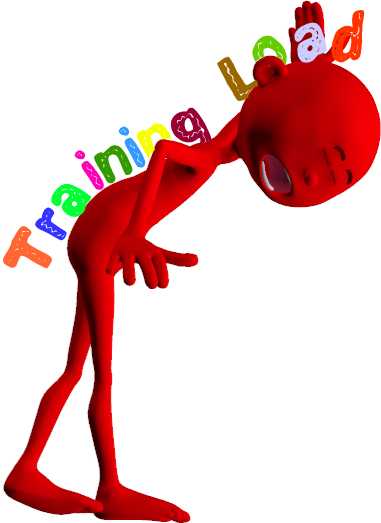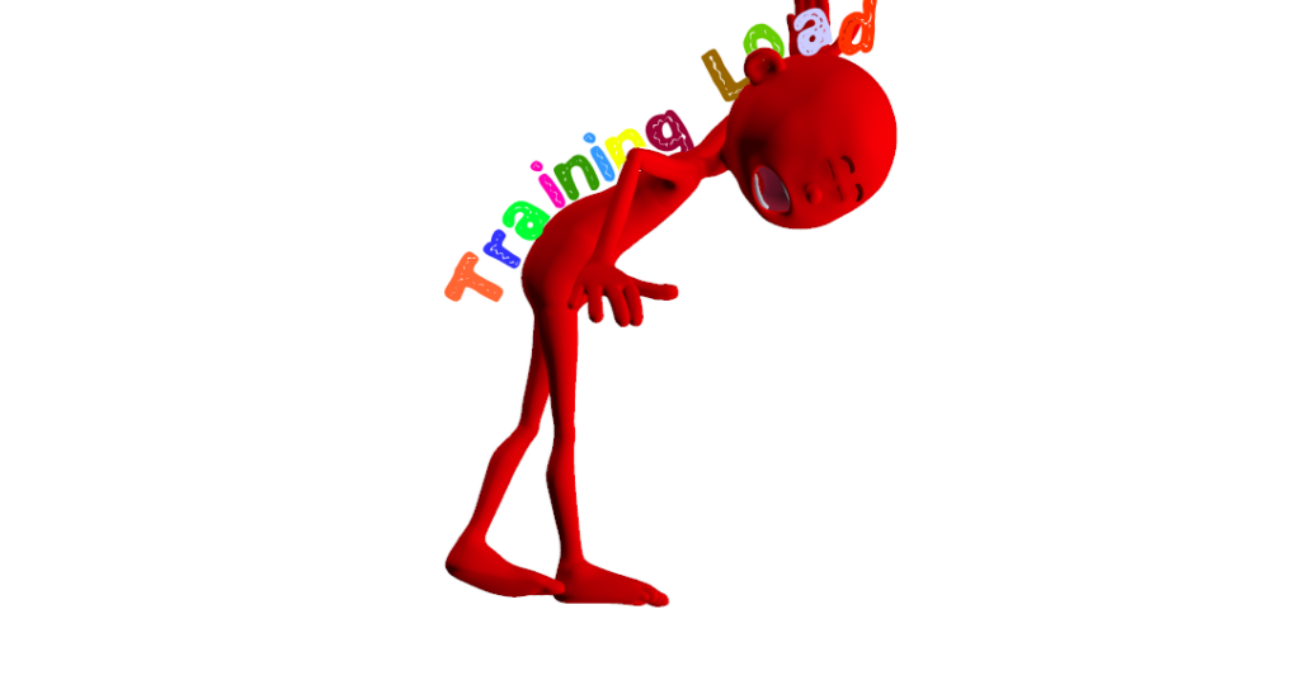Exercising into the (un)known
I’ve recently been reading research papers on fatigue and workload and I’ve been intrigued by how much (or how little) we really understand about this crucial aspect of exercise, training and human performance. When I contemplate this work, I realise that I harbour ongoing concerns about how we approach some aspects of training and preparation. It seems that we are overly preoccupied with optimising training load to the point where researchers and strength and conditioning staff are constantly seeking ways to ‘push the envelope’, while at the same time trying to avoid overdoing things. That’s fine, but the problem is that in many sporting circles it seems we are far more fearful of not having done enough training than of doing too much! I wonder if we tallied up the ledgers with pros and cons whether that mindset would hold up. Anyway, there seemed to me a number of potential blog topics here, so the next series of blogs will look at fatigue, workload monitoring and the sociology of pain. In this blog I wanted to focus on a topic that has piqued my interest for a while now and that concerns fatigue and how we pace our performances and workouts.

Teleoancipation
Ulmer (1996) is credited with describing the phenomena that has been termed teleoanticipation – Gee, I just love big words!! The word is suggested to have origins in the Greek words ‘telos’ (for end) and ‘teleios’ (for perfect). So an interpretation of the word could be anticipation of a perfect ending. What Ulmer was referring to was how individuals optimally apportion their energy and effort so that they reach the finish line with very little to spare, but also ensuring that they do not crash out, prematurely exhausted. When you think about it, that’s a pretty impressive thing to be able to predict with any accuracy – especially with some sporting activities and events that have to be more challenging to anticipate than others. Figuring out pacing for 100m sprint, 400m, 1500m or 42km – all done without much conscious thought! Teleoanticipation is thought to originate through a ‘central programmer’ that prepares for an activity based on its known endpoint. This controller then makes use of ongoing feedback to adjust the pace/rate of work and the intensity (Beaudoin et al, 2018). Pacing strategies are thought to be determined ahead of exercise and are based on the expected exercise duration and intensity as well as the individual’s available resources – energy availability and muscle force producing capabilities. The addition of changing environmental conditions and the emotions associated with competition make optimal energy planning even more complex and uncertain.
Intensity is….
Exercise intensity generally refers to how hard an exercise or exercise session is, but it has been suggested that there can be at least three interpretations of intensity. Firstly there is the intensity that is directed or prescribed by the coach, strength and conditioning coach or exercise professional. That’s where we put our lab coats on and calculate a seemingly precise workout intensity based on an athlete’s fitness and the desired training response. Then there is the intensity experienced and perceived by the athlete. Depending on their mood, their fatigue status and energy levels, this might correspond with the prescribed intensity but it could just as easily be higher or lower on the day. And finally there’s the intensity that is observed, measured and recorded by the exercise professional. It might be a timed run, distance covered, weight lifted or a heart rate recorded. The latter is considered an objective measure of work, but it may not accurately reflect the effort applied on the day or the stimulus necessary for provoking an adaptation. Work with me here – imagine for a moment that there could be times when these three versions of intensity don’t overlap or correspond!
It would have to be a natural human instinct to always want to keep something in reserve when you train or compete. No one wants to collapse because they have ‘run out of gas’ 1km out from the finish line; no one wants to achieve muscular failure with 100kg of weights perched precariously overhead! So, somehow we use our experience, allow for how we are feeling physically and emotionally, and perform some sort of miraculous calculation to work out how fast we can run for the last 1km or how many reps we have left in us.

Being pushed or pushing?
People seek out (or have assigned to them) strength and conditioning coaches, personal trainers and exercise professionals. Often it is because they need guidance on what they should be doing, other times its someone to motivate and encourage them. Your ‘exercise coach/motivator’ could be someone that you want to hold you accountable, a source of encouragement for when you really don’t feel like training, or someone who pushes you to the wall. Picking up on that last point, I’m wondering what happens when you’ve ‘teleoanticipated’ appropriately and the situation or the exercise professional pushes you even harder? We typically think of that as great exercise prescription and coaching, but could it be harmful?
Role models
It seems to me that we are in an era where the ability to discount feelings of fatigue, to shake off pain and discomfort is one of the most highly respected and admired attributes of an athlete (or fitness celebrity). To the point, where a highly performing athlete who may not appear to really push themselves, may not be as well respected for their absence of sport ethic (see previous blog post A workout ethic – what have we become?) or effort. I realise that those types of athletes have always been around, but pre media and social media, an individual’s training habits were usually just anecdotal. Nowadays we are exposed to insights and advertisements that celebrate the virtues of being able to push through pain and fatigue! Yet we don’t have to look too far to find examples of elite performers who it seems have never ‘left it all on the field or court’. They didn’t collapse at the line or play through pain or injury – somehow they’ve given off a vibe that they are not putting 100% effort into everything that they do and the whispers begin. I reckon some of those athletes are often victims of simply being very relaxed and efficient in their athletic pursuits. They are so good, so skilled, that they make it look too easy – so much so, that we don’t think that they are really trying hard enough. They deserve more respect than that (I think!).
Is it safe?
The question I’m asking is in this exercise environment that encourages more, more, more, when does ‘more’ become too much more? We all agree that exercise is good for us, but surely there is a safe upper-dose limit? There certainly is with pharmaceuticals, vitamins and minerals, but what about exercise? There has to be a point with training where the potential adverse affects, like injury, metabolic and cardiovascular risks can outweigh any marginal benefits. O’Keefe et al (2012) have hypothesised that excessive endurance training may have some adverse cardiovascular effects for some individuals. They base their theory on observations that intense, sustained exercise over time can provoke myocardial injury and remodelling. They note that a 5-fold increase in atrial fibrillation has been observed in veteran endurance athletes. So, it’s no real stretch to imagine that other systems could be adversely affected by chronic heavy training.
I’m wondering here whether some of the highly trained athletes (and fitness buffs) that we admire, are somehow able to override their teleoanticipation. Maybe they are ignoring the feedback that says that the gauge is nearly on ‘E’ and they are hacking their central programmer and driving themselves closer to human physical limits. They are ‘redlining’, and I’m questioning whether that is really a sensible thing to be doing or advocating. I guess many things come with risk but is this one worth it? Last blog I wrote about Hughes and Coakley’s (1991) ‘sport ethic’ and positive deviance in athletes. To recap they were referring to athletes uncritically accepting criteria that define a real athlete. I’m sure that Hughes and Coakley had no insight at the time that the sport ethic would be so clearly on display in the public domain, and how it might in turn be adopted by the fitness world in the quest for extreme exercise and taming one’s body to conform to extremes. I’m thinking here of some of the extreme conditioning programmes currently on offer, and the hazards associated with those.
Clearly teleoanticipation should be enhanced if an individual is made fully aware of the planned duration, structure and intended intensity of a training session or workout. As exercise professionals we can preface workouts with that information, but we also need to be considering how individuals deal with exercise intensity and how they appear to teleoanticipate their workouts. A starting point may be through trying to reconcile their prescribed, perceived and completed workout intensities. Understanding their efforts in these contexts will hopefully assist in planning rest, recovery and finding an appropriate balance of hard and easy training sessions to suit the individual.
Selected references
- Beaudoin, C.M. et al (2018) Effect of bench press load knowledge on repetitions, rating of perceived exertion, and attentional focus. J Strength Cond Res 32(2): 514– 519.
- Hughes, R., Coakley, J. (1991) Positive Deviance Among Athletes: The Implications of Overconformity to the Sport Ethic. Sociology of Sport Journal 8;307–325.
- O’Keefe, J.H et al (2012) Potential Adverse Cardiovascular Effects From Excessive Endurance Exercise Mayo Clinic Proceedings 87 (6); 587 – 595
- Ulmer, H.-V. (1996) Concept of an extracellular regulation of muscular metabolic rate during heavy exercise in humans by psychophysiological feedback Experientia 52; 416–420.

Habadaptation’: Tolerating or adapting? – The 10th Man
August 3, 2021 @ 6:18 am
[…] the pain and discomfort and ‘muscling’ that bar up? I hinted at this idea in a previous blog (Exercising into the (un)known) where I wondered whether we might be able to override teleoanticipation and push closer to our […]